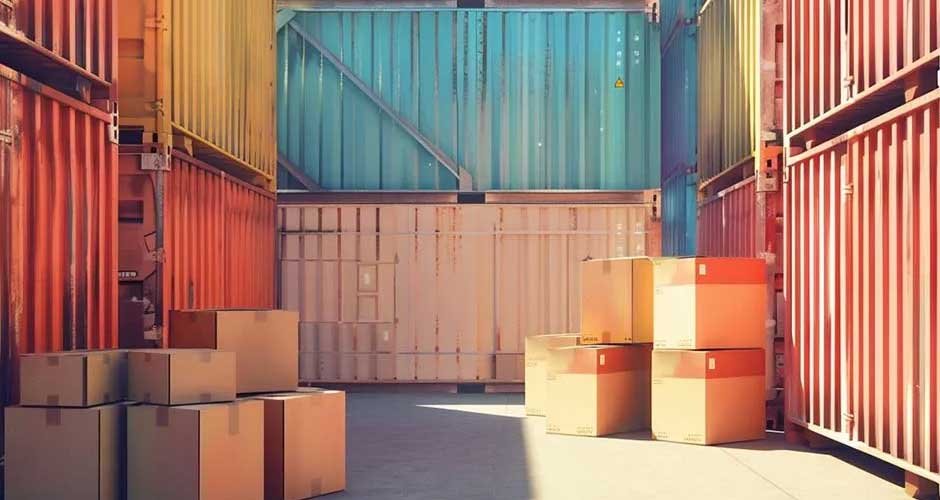Pallet shipping is a widely used method for transporting goods efficiently, for both domestic and international shipments. By consolidating items onto a single pallet, businesses can optimize space, reduce handling time, and protect their products during transit. However, achieving efficiency in pallet shipping requires careful planning and execution. This comprehensive guide will walk you through the essential steps to ensure your pallet shipping process is both cost-effective and reliable.
Understanding the Basics of Pallet Shipping
Pallet shipping involves stacking and securing goods onto a pallet, which is then handled as a single unit throughout the shipping process. This method is ideal for transporting large quantities of goods or heavy items, as it reduces the risk of damage and streamlines loading and unloading.
- Pallet Types: Common pallet materials include wood, plastic, and metal. Wooden pallets are the most commonly used due to their cost-effectiveness and availability. However, plastic and metal pallets offer durability and resistance to contamination, making them suitable for specific industries like pharmaceuticals and food.
- Standard Pallet Size: The most commonly used pallet size is 48 x 40 inches, also known as the GMA (Grocery Manufacturers Association) standard pallet. However, depending on your specific needs, you may encounter other sizes, such as 42 x 42 inches or 48 x 48 inches.
Choosing the Right Pallet
Selecting the appropriate pallet is the foundation of efficient pallet shipping. Consider the following factors:
- Load Capacity: Ensure the pallet can support the weight of your goods without bending or breaking. Overloading a pallet can lead to instability and damage during transit.
- Pallet Condition: Use only pallets that are in good condition—free from cracks, splinters, or missing boards. A damaged pallet compromises the safety of your shipment and could lead to additional costs or delays.
- Pallet Material: Choose a material that suits your shipping requirements. For instance, if you’re shipping heavy machinery, a metal pallet may offer better support, while a plastic pallet might be more appropriate for goods that need to remain sterile.
Optimizing Load Efficiency
Efficient pallet shipping starts with optimizing how you load your goods onto the pallet. Here’s how:
- Stacking Strategy: Stack your items in a way that maximizes space while maintaining stability. Place heavier items at the bottom and lighter items on top. Use a brick stacking pattern for boxes, where each layer is staggered, to increase stability.
- Avoid Overhang: Make sure no part of your load extends beyond the edges of the pallet. Overhanging items are at greater risk of damage and can cause the pallet to become unbalanced, leading to potential accidents during handling.
- Uniform Height: Aim for a uniform stack height across the pallet. This makes it easier to stack multiple pallets on top of each other and ensures better stability during transport.
Securing Your Load
Once your goods are stacked, securing them properly is crucial for efficient pallet shipping. Here’s how to do it:
- Shrink Wrap: Use shrink wrap to tightly secure your load to the pallet. Start at the base and work your way up, wrapping around the entire stack multiple times. This binds the items together and prevents them from shifting during transit.
- Strapping: For additional security, use straps to secure the load to the pallet. Polyester or steel straps are ideal for heavy loads, while plastic straps are sufficient for lighter shipments. Apply the straps vertically and horizontally to keep the load firmly in place.
- Edge Protectors: Use edge protectors or corner boards to reinforce the edges of your pallet load. These prevent straps from cutting into your goods and help to distribute the tension evenly, reducing the risk of damage.
Labeling and Documentation
Proper labeling and documentation are essential for efficient pallet shipping, especially for large shipments or international transport:
- Shipping Labels: Attach a clear and legible shipping label to the outside of your pallet. Include all necessary information, such as the destination address, return address, and tracking number. Make sure the label is placed where it won’t be obscured or damaged during handling.
- Handling Instructions: If your pallet requires special handling, such as “Fragile,” “This Side Up,” or “Keep Dry,” clearly label the pallet with these instructions. This ensures that handlers are aware of any special requirements, reducing the risk of mishandling.
- Customs Documentation: For international shipments, ensure that all necessary customs documentation is completed accurately and attached securely to the pallet. This includes commercial invoices, packing lists, and any other required paperwork.
Choosing the Right Carrier
Selecting a reliable carrier is key to ensuring that your palletized goods reach their destination safely and on time:
- Experience with Pallet Shipping: When you want to ship pallets with shiply.com, choose a carrier with a proven track record in pallet shipping. They should have the appropriate equipment and expertise to handle palletized goods, including forklifts, pallet jacks, and experienced staff.
- Transit Time and Cost: Compare transit times and shipping costs from different carriers. While it’s important to find a cost-effective option, ensure that the carrier can deliver your goods within the required timeframe.
- Insurance and Tracking: Verify that the carrier offers adequate insurance coverage for your shipment. Additionally, choose a carrier that provides real-time tracking, so you can monitor your shipment’s progress and address any issues promptly.
Conclusion
Efficient pallet shipping requires careful planning, attention to detail, and a commitment to continuous improvement. By choosing the right pallet, optimizing your load, securing your goods, and working with reliable carriers, you can ensure that your shipments are handled safely and arrive on time. Whether you’re shipping locally or internationally, following this comprehensive guide will help you to achieve cost-effective and reliable pallet shipping, protecting your goods and your bottom line.











